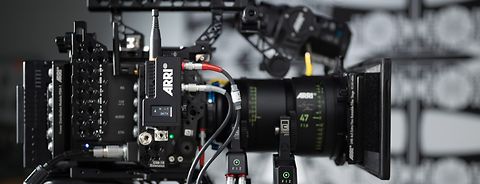In short: CAM for Cameras and LBUS for LBUS devices (motors, LCubes, OCU‑1s, Master Grips etc).
The RIA‑1 is a little different to previous devices with LBUS ports, where you may have used an LBUS cable to connect that device with a camera. If you are using the RIA‑1 as a motor controller on a camera it is vitally important that you use the CAM port on the RIA‑1 to interface with your camera, and the LBUS ports on the RIA‑1 to connect to motors.
When used as a motor controller, the RIA‑1 will not function as intended if it is connected at any point in a single LBUS daisy chain with an ARRI camera and lens motors, due to the lens motors being able to detect two motor controllers at the same time (RIA‑1 and camera e.g. ALEXA Mini LF). Instead, the RIA‑1 should communicate to the camera through the CAM port, and communicate to the lens motors separately through an LBUS port.








